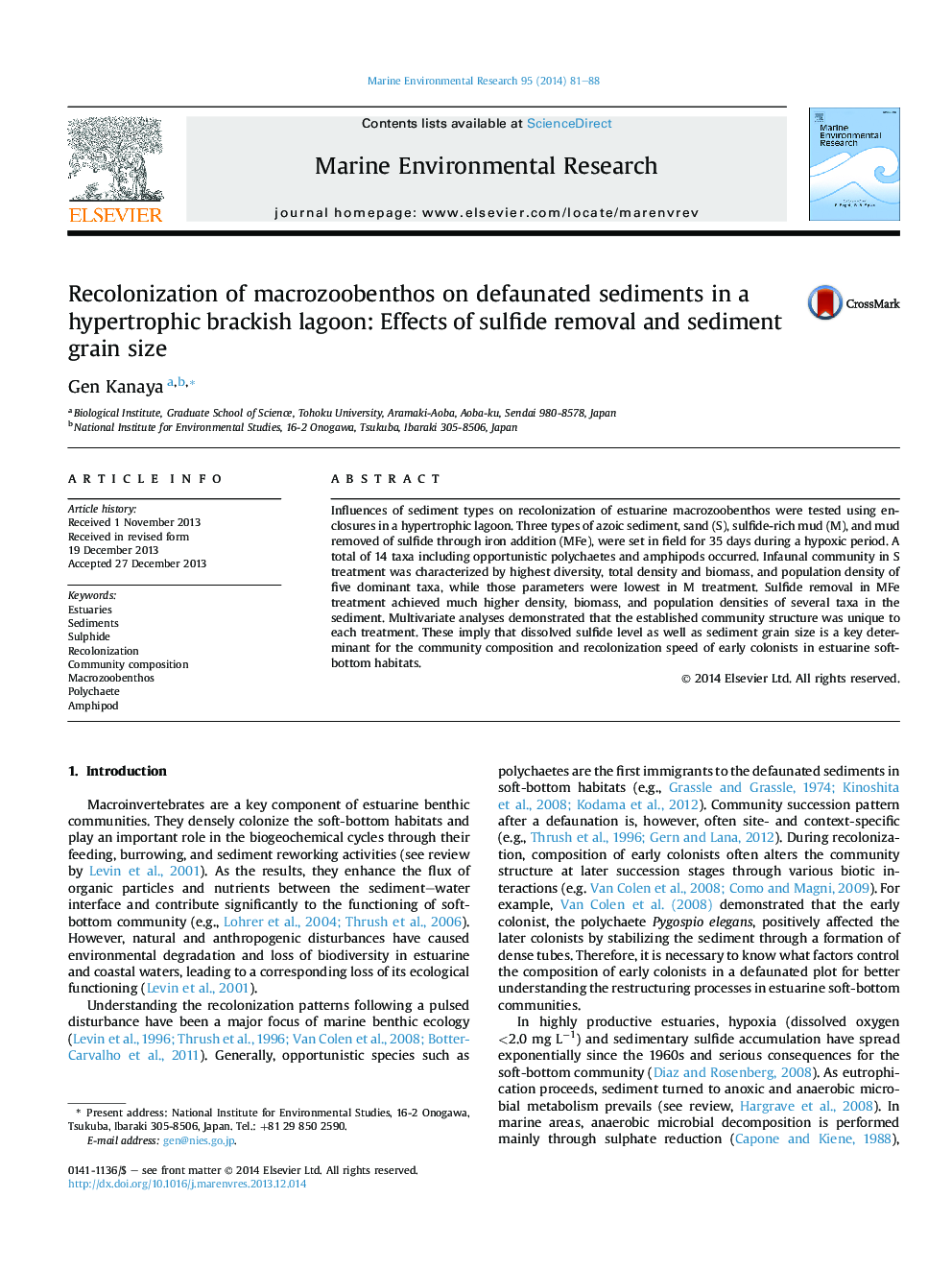| Article ID | Journal | Published Year | Pages | File Type |
|---|---|---|---|---|
| 4550833 | Marine Environmental Research | 2014 | 8 Pages |
•Habitat selectivity of infauna was tested in a eutrophic lagoon using enclosures.•Sand, mud, and mud without sulfide were set in field for 35 d in fall.•Diversity, density, and biomass of infauna were higher in sand than in mud.•Sulfide removal increased abundance, biomass, and density of several taxa.•Sulfide level and granulometry are key determinants of community structure of infauna.
Influences of sediment types on recolonization of estuarine macrozoobenthos were tested using enclosures in a hypertrophic lagoon. Three types of azoic sediment, sand (S), sulfide-rich mud (M), and mud removed of sulfide through iron addition (MFe), were set in field for 35 days during a hypoxic period. A total of 14 taxa including opportunistic polychaetes and amphipods occurred. Infaunal community in S treatment was characterized by highest diversity, total density and biomass, and population density of five dominant taxa, while those parameters were lowest in M treatment. Sulfide removal in MFe treatment achieved much higher density, biomass, and population densities of several taxa in the sediment. Multivariate analyses demonstrated that the established community structure was unique to each treatment. These imply that dissolved sulfide level as well as sediment grain size is a key determinant for the community composition and recolonization speed of early colonists in estuarine soft-bottom habitats.
